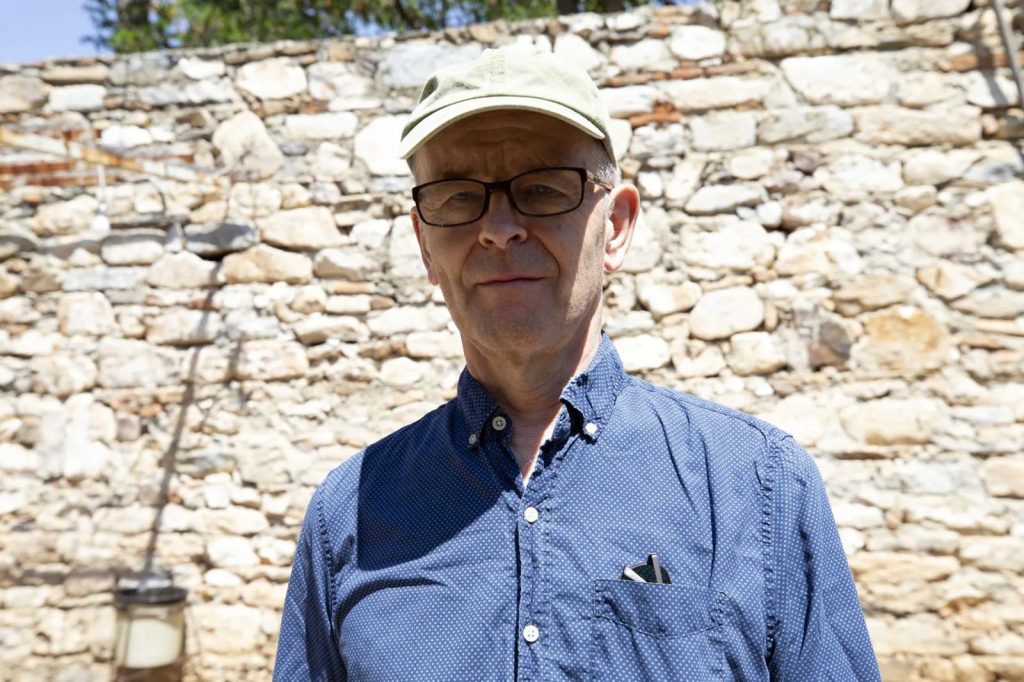
Traces of an Anatolian principalities-era market found in the ancient city of Aphrodisias
In the ancient city of Aphrodisias, dedicated to Aphrodite, the goddess of love and beauty, located in the Karacasu district of the Aydin province of Aydin in southwestern Türkiye, traces of a market dating back to the Anatolian principalities were found.
Anatolian Principalities Period It is the period in which Turkmen beys established their sovereignty in their own regions with the weakening of the Anatolian Seljuk State after the Mongol invasion.
The most important principality of this period is the Ottoman Principality founded by Osman Bey, the Kayı Bey, who shaped world history.
Aydın province had an important position in the Anatolian Principalities Period. During this period, many principalities were established within or near the borders of Aydın and these principalities shaped the political, economic and cultural structure of the region.
📣 Our WhatsApp channel is now LIVE! Stay up-to-date with the latest news and updates, just click here to follow us on WhatsApp and never miss a thing!!
The principalities centered in Aydın province were Menteşeoğulları, Saruhanlılar and Germiyanoğulları.

It is not yet known which principality the marketplace belongs to
In the ancient city of Aphrodisias, excavations are being carried out in different layers from the 5th century BC to the Seljuk period when the settlement continued.
The last finding of the excavation team was the traces of a market place located on the biggest street of the city during the Principalities period, where all Eastern Mediterranean peoples shopped.

Prof. Roland R.R. Smith, who heads the excavations in the ancient city of Aphrodisias, a UNESCO World Heritage Site, said, “We are continuing excavations in the late antique and early Byzantine layers on the main street.

In the 7th century, we found that the city entered a period of collapse and the colonnaded streets and columns were destroyed. Despite this, we see that people did not leave this place, they continued to build a life on the destroyed buildings and continued to live.”
Prof. Dr. Smith said, “We saw that there was still a lot of agricultural activity here. People realized that they could live here without enormous marble buildings. All those marble buildings, baths, gymnasiums built during the Roman period… They realized that these were no longer a necessity, that they could live without them. In the end, we can call it a different kind of life, but it was not a dark period.”

“This is a very rich and important part of Anatolia and it has always been inhabited. For example, the area a little higher up on this side is the market area of the Principalities period and has given us a very significant amount of coins from the surface. Our Turkish numismatics teams carried out a serious study on the coins of the principate period in this area. It showed us conclusively that it was a marketplace, and the finds show that it was an international marketplace and was used by all the Eastern Mediterranean people.”
Smith also noted that work is ongoing to determine which principality period the marketplace belonged to.
Cover photo: Ferdi Uzun/AA
You may also like
- A 1700-year-old statue of Pan unearthed during the excavations at Polyeuktos in İstanbul
- The granary was found in the ancient city of Sebaste, founded by the first Roman emperor Augustus
- Donalar Kale Kapı Rock Tomb or Donalar Rock Tomb
- Theater emerges as works continue in ancient city of Perinthos
- Urartian King Argishti’s bronze shield revealed the name of an unknown country
- The religious center of Lycia, the ancient city of Letoon
- Who were the Luwians?
- A new study brings a fresh perspective on the Anatolian origin of the Indo-European languages
- Perhaps the oldest thermal treatment center in the world, which has been in continuous use for 2000 years -Basilica Therma Roman Bath or King’s Daughter-
- The largest synagogue of the ancient world, located in the ancient city of Sardis, is being restored











Leave a Reply